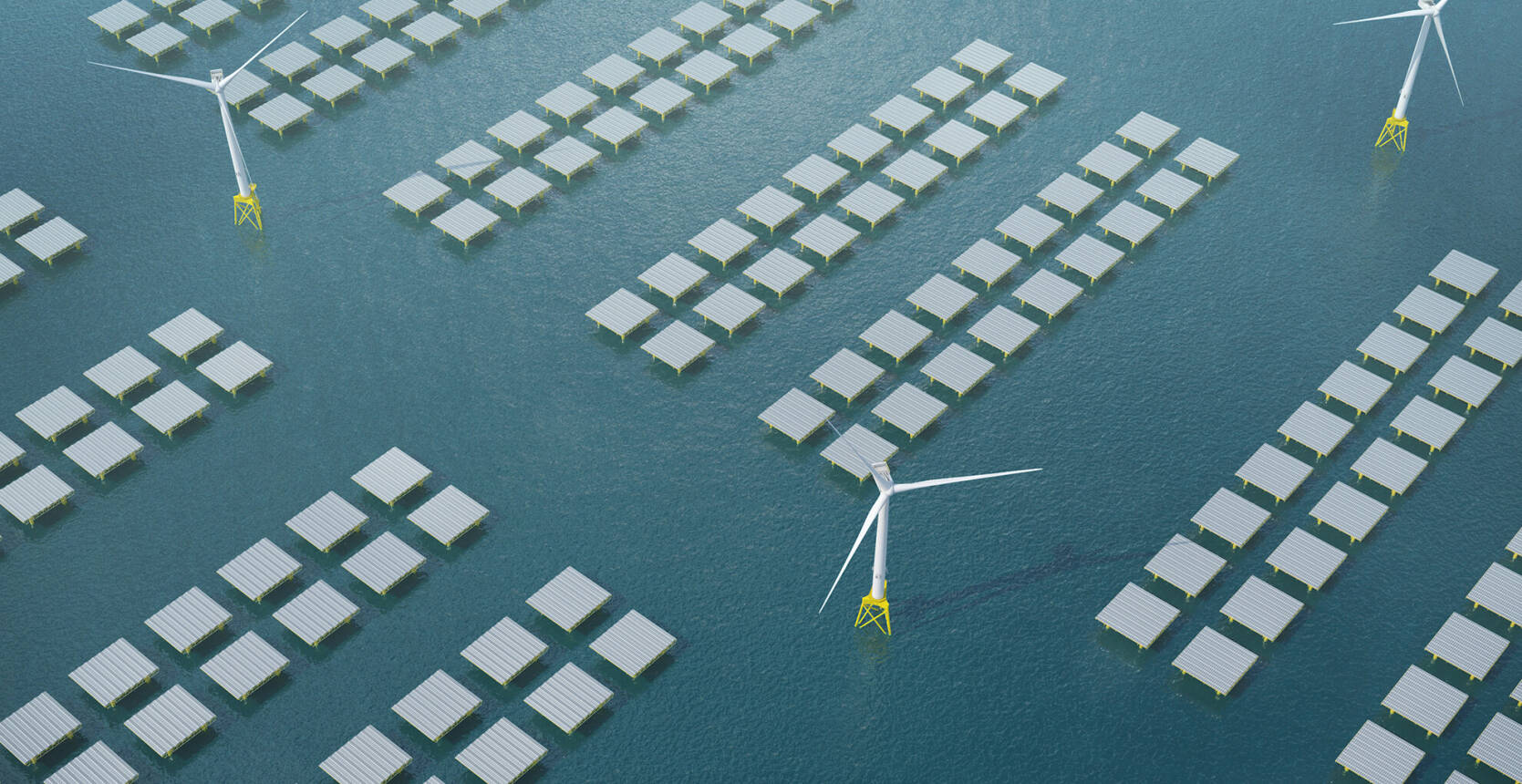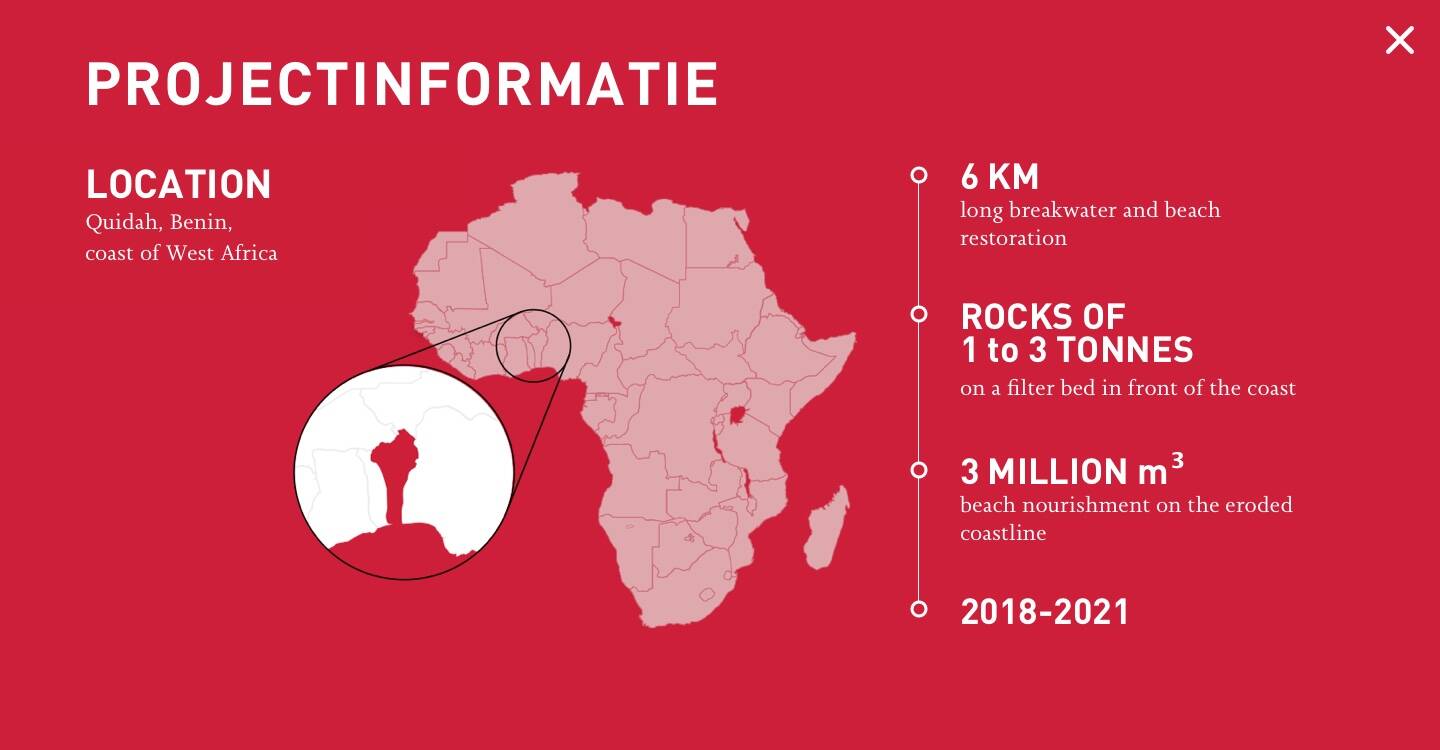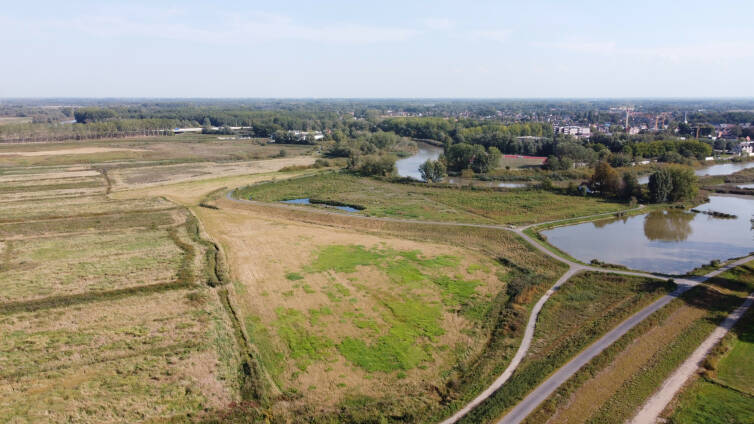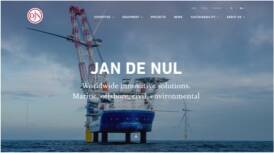

sun and wind


The full-scale floaters will be a lot bigger than the prototype we set up. In the comparison, you can see just how large such a floater is: four times the size of the one we’ve placed in Ostend. Thanks to its added height, waves will pass below the solar panels, even in storm conditions.
Jan Vandenweghe
Project Engineer






As the European transition to renewable energy is in full swing, many turn to solar and wind power. But space on land for wind turbines is limited, and not all constructions are fit for solar panel installations. Thus, Jan De Nul and its partners look towards the sea for an innovative solution.
Deep down in the water, the anchors that will keep the final floaters in place don’t have the structure one would expect. We’ve developed, along with other companies and scientific institutions, anchors to test and promote the recovery and growth of marine biodiversity. The specific shape and material of the anchors, with for example notches and a rough surface means that small life forms such as weeds, fish, and shellfish can find a home in and around the anchors.
But we wouldn’t be Jan De Nul if we didn’t go a step further: we’re testing different materials for the floater as well, along with the possibility of using the floaters as oyster and mussel farms. And further below, we see if we can help support marine biodiversity thanks to our technology. We’re innovating during an innovation project.
How well do the solar panels and their floater handle everything Mother Nature throws at them?
What is the best angle for the solar panels at sea?
How often do we need to clean them for optimal results?
In August, a prototype of the floating solar technology SeaVolt was lowered into the water at Ostend, Belgium. This is the first testing phase in open air and water, after thorough lab tests and calculations. When the construction has gone through a year of testing in the harsh conditions of the North Sea, we can evaluate the technology:
In civil construction, the ‘multi-use of space’ is a well-established fact. Combining living, working, and recreation in the same area or on different levels allows for denser spaces. On sea, offshore wind farms cover large areas in which other marine activities are prohibited for safety reasons. If governments give their approval though, other forms of energy production can take place in these areas. So wouldn’t it be great to generate electricity via photovoltaic panels on the surface of the sea?


metres
tonnes
metres
metres

metres
solar panels





floaters


sun and wind

Deep down in the water, the anchors that will keep the final floaters in place don’t have the structure one would expect. We’ve developed, along with other companies and scientific institutions, anchors to test and promote the recovery and growth of marine biodiversity. The specific shape and material of the anchors, with for example notches and a rough surface means that small life forms such as weeds, fish, and shellfish can find a home in and around the anchors.


But we wouldn’t be Jan De Nul if we didn’t go a step further: we’re testing different materials for the floater as well, along with the possibility of using the floaters as oyster and mussel farms. And further below, we see if we can help support marine biodiversity thanks to our technology. We’re innovating during an innovation project.

metres

metres
floaters
How well do the solar panels and their floater handle everything Mother Nature throws at them?
What is the best angle for the solar panels at sea?
How often do we need to clean them for optimal results?
The full-scale floaters will be a lot bigger than the prototype we set up. In the comparison, you can see just how large such a floater is: four times the size of the one we’ve placed in Ostend. Thanks to its added height, waves will pass below the solar panels, even in storm conditions.
In August, a prototype of the floating solar technology SeaVolt was lowered into the water at Ostend, Belgium. This is the first testing phase in open air and water, after thorough lab tests and calculations. When the construction has gone through a year of testing in the harsh conditions of the North Sea, we can evaluate the technology:
solar panels
metres

tonnes
metres
In civil construction, the ‘multi-use of space’ is a well-established fact. Combining living, working, and recreation in the same area or on different levels allows for denser spaces. On sea, offshore wind farms cover large areas in which other marine activities are prohibited for safety reasons. If governments give their approval though, other forms of energy production can take place in these areas. So wouldn’t it be great to generate electricity via photovoltaic panels on the surface of the sea?

Jan Vandenweghe
Project Engineer
As the European transition to renewable energy is in full swing, many turn to solar and wind power. But space on land for wind turbines is limited, and not all constructions are fit for solar panel installations. Thus, Jan De Nul and its partners look towards the sea for an innovative solution.




























